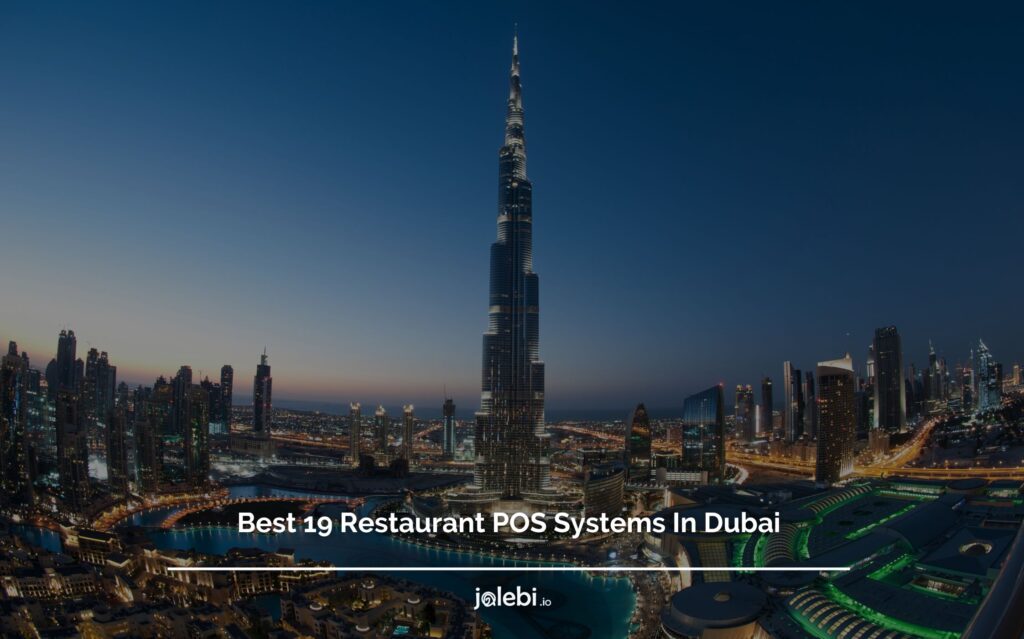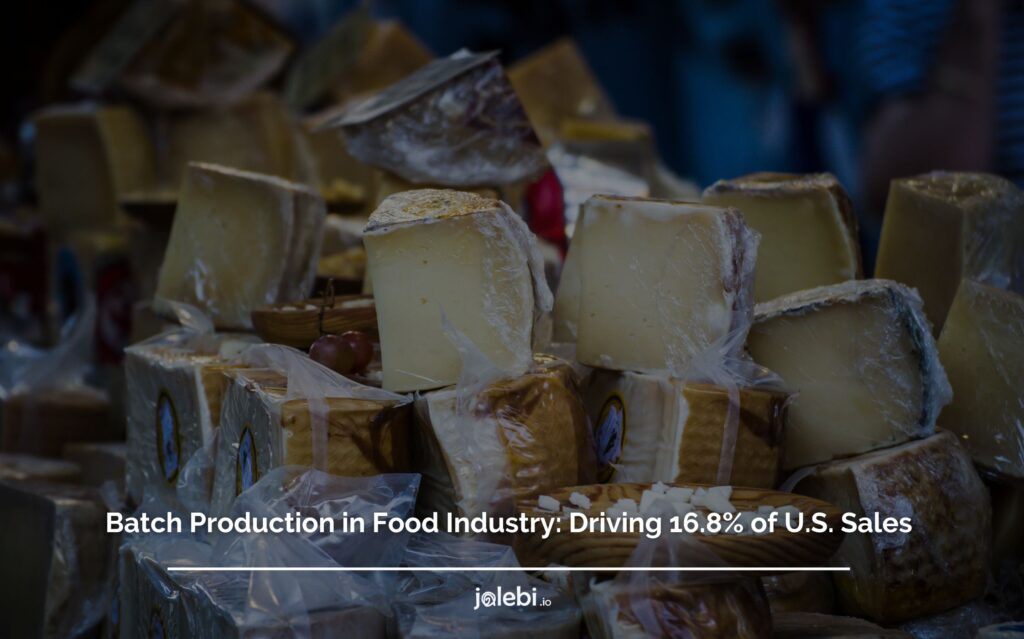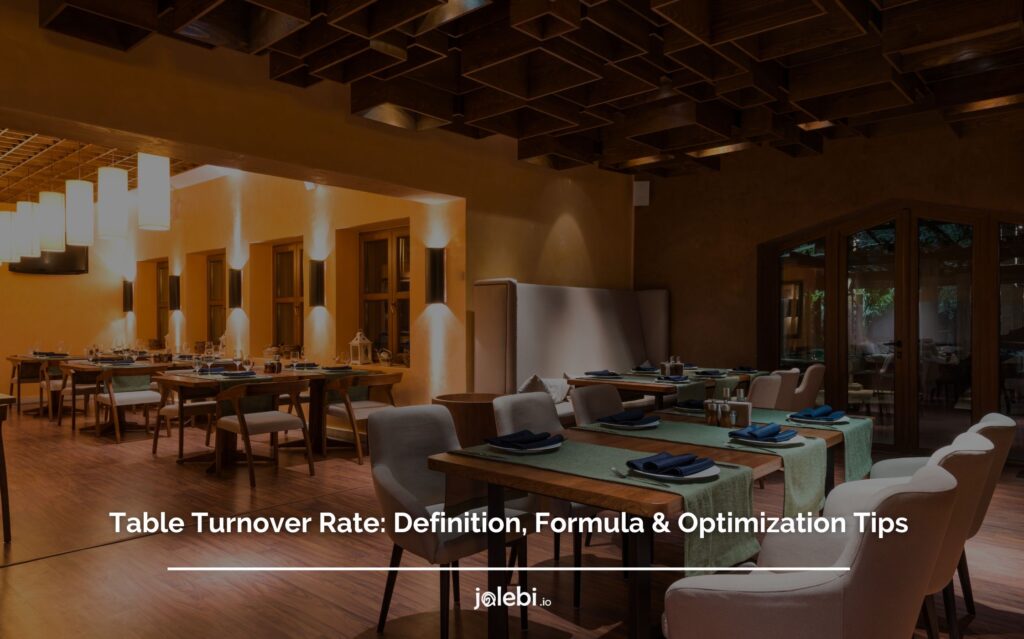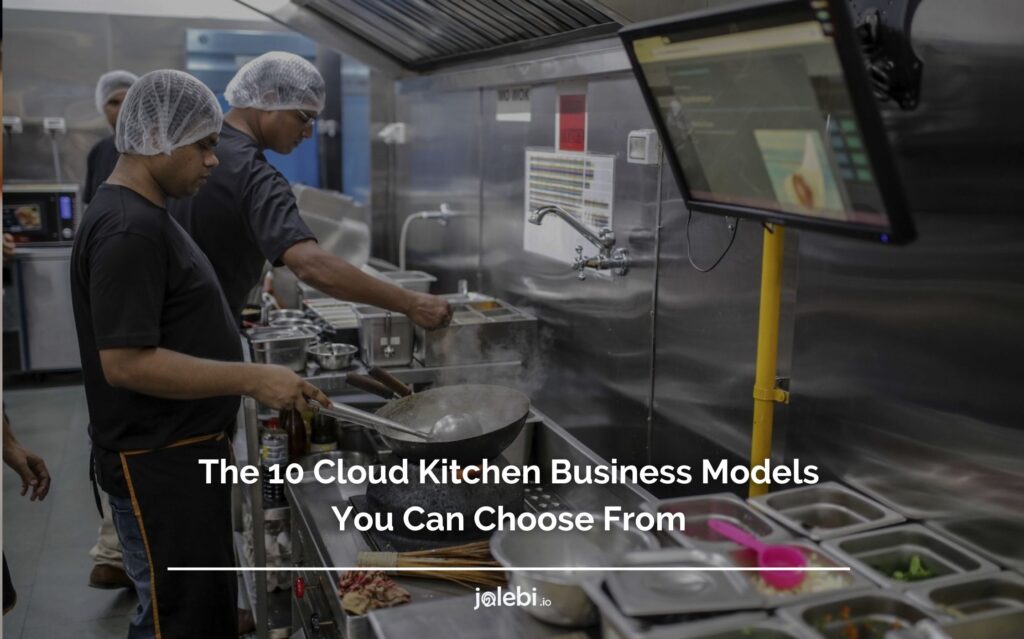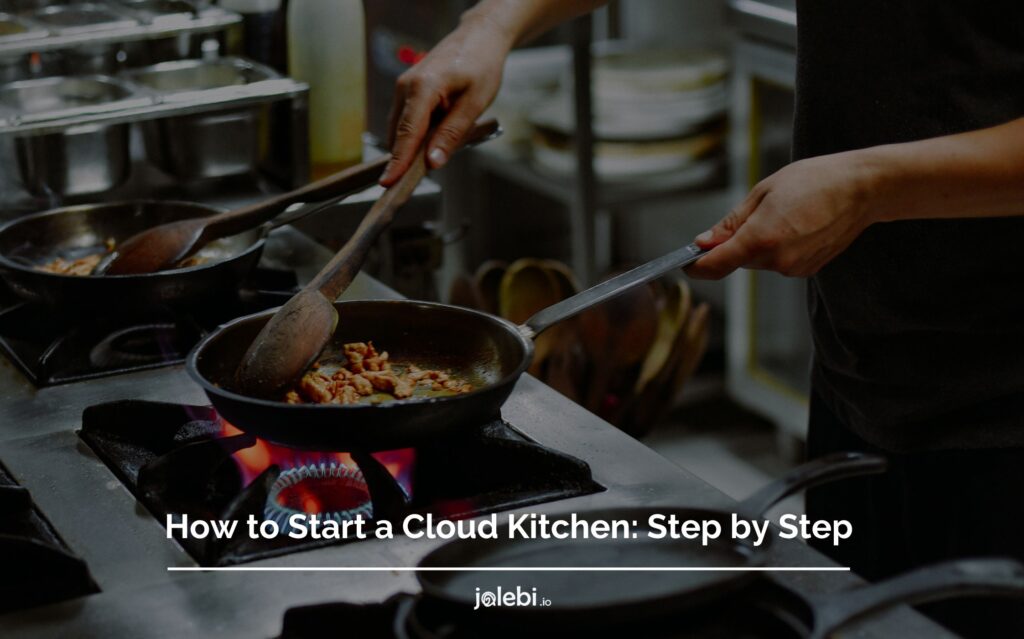Table of Contents
Ever noticed how some restaurants seem to have everything just right, while others struggle? Well, the secret often lies in how they handle their stuff – especially the ingredients in their kitchen.
Imagine having too much of one inventory item, not enough of another, and money slipping away. It’s a common headache for many restaurants, big and small.
But fear not! This guide is like a treasure map to an organized kitchen, where everything has a purpose, and waste is a thing of the past.
Let’s learn the ropes of managing restaurant inventory and make your business a success with top inventory management solutions in 2025!
Why Inventory Management Matters: More Than Just Counting Beans
Inventory management might sound like a mundane bookkeeping task, but it’s the silent hero of successful businesses.
Getting it right can be the difference between thriving and losing ground. Here’s why:
1. Happy Customers, Happy Business:
– Reduce stockouts: No one likes seeing “out of stock” signs. Studies show 68% of customers abandon their carts if an item is unavailable, potentially never returning.
– Faster deliveries: Efficient inventory tracking means smoother order fulfillment, leading to happier customers and repeat business.
2. Cost Savings Galore:
– Minimize waste: Overstocking leads to expired products and write-offs, costing businesses billions annually. Effective inventory management helps avoid this pitfall.
– Optimize storage: Knowing exactly what you have frees up valuable warehouse space, potentially reducing rental costs.
– Lower carrying costs: Every item sitting in storage incurs holding costs like insurance and storage fees. Smart inventory management minimizes these expenses.
3. Boosts Operational Efficiency:
– Improved forecasting: Accurate inventory data helps predict demand fluctuations, leading to better purchasing decisions and smoother production planning.
– Streamlined workflows: Knowing what you have and where it is reduces time spent searching for stock, making operations more efficient.
The Numbers Don’t Lie:
– Effective inventory management can boost overall profitability by 2-5%.
Top Restaurant Inventory Management Softwares & Solutions in 2025
1. jalebi.io: The Best Restaurant Inventory Management Solution
To reduce the cost of serving each order, jalebi.io is an inventory-first restaurant stock management software designed with restaurant owners in mind.
Streamline Your Inventory Tracking
jalebi simplifies the process of inventory tracking by providing a centralized platform where you can monitor your stock levels in real-time.
With just a few clicks, you can access comprehensive data on your inventory, including quantities, locations, and expiration dates. This visibility allows you to make informed decisions about purchasing, menu planning, and stock rotation.
Automated Stock Alerts
Say goodbye to the headaches of manually monitoring inventory levels. Jalebi offers an automated stock alert feature that notifies you when stock levels reach a specified minimum.
This ensures that you never run out of essential items and can restock them promptly. No more last-minute rushes or disappointed customers.
Efficient Reordering Process
jalebi streamlines the reordering process by providing you with accurate data on consumption patterns, historical sales, and supplier information.
With this information at your fingertips, you can create optimized purchase orders, negotiate better prices with suppliers, and maintain optimal stock levels without excessive overstocking.
Forecasting and Demand Planning
With jalebi’s advanced analytics capabilities, you can analyze historical data and forecast future demand with accuracy.
It helps you anticipate fluctuations in demand, plan for seasonal variations, and optimize your inventory accordingly.
Real-Time Reporting and Insights
jalebi provides comprehensive reporting tools that offer valuable insights into your inventory performance.
From tracking inventory turnover rates to identifying slow-moving items, you can make data-driven decisions to optimize your inventory management.
Visual dashboards and customizable reports allow you to monitor key metrics and identify areas for improvement.
Now that you know how to track inventory for your restaurant with jalebi, partner with us today to streamline your inventory management process!
2. Foodics
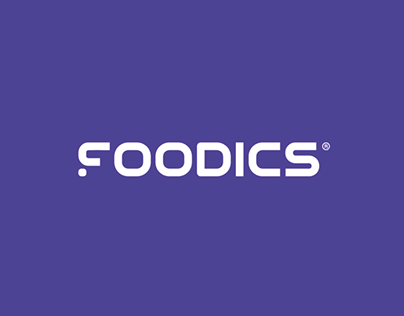
Foodics is a leading restaurant stock management software that operates in KSA. It helps cafes manage their inventories efficiently and in a cost-effective manner. The system can be used to track food items, beverages, and other supplies.
Here’s a list of some Foodics’ features:
– It enables cafes to manage stock and sales more efficiently
– Foodics provides real-time insights into cafe performance
– It streamlines order taking and payments
– The food inventory control software is highly customizable, making it easy to tailor it to each cafe’s specific needs.
Read More: Best Foodics Replacement in Saudi Arabia
3. Syrve
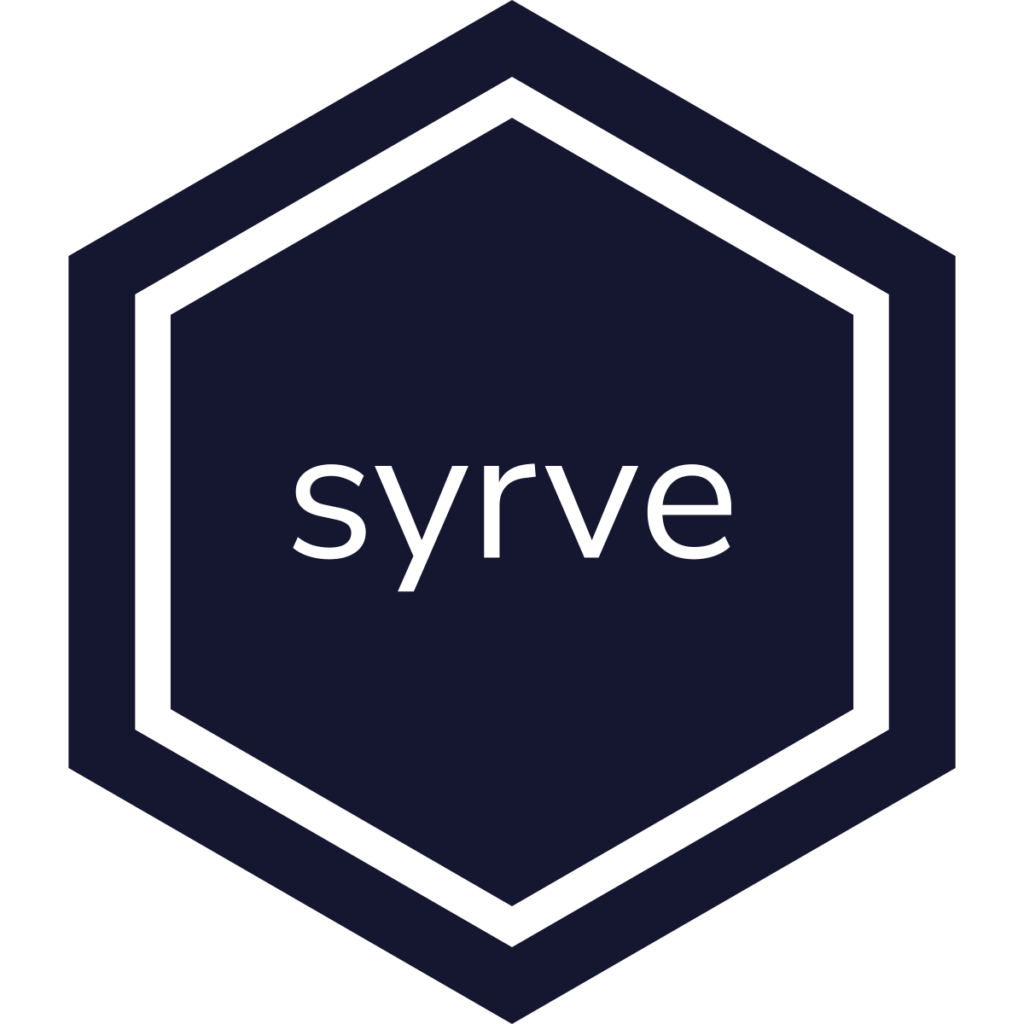
Syrve is a leading inventory management software for restaurants that has been in business for many years and has a strong reputation for providing quality products and services. Syrve offers a variety of features and benefits that make it an ideal choice for businesses of all sizes. Some of the key features of this food inventory management software include:
– Real-time tracking of inventory levels
– Ability to set low stock alerts
– Automatic reordering of items
– Detailed reports and analytics
4. Re-POS

Re-POS is a leading restaurant stock management software that operates in KSA. The company has developed a software that helps cafes manage their inventories more efficiently, and has been constantly expanding its operations to meet the needs of its clients.
Here are some of Re-POS features:
– Integration with major e-commerce platforms
– An intelligent order management system
– A real-time view of your cafe’s inventory
– Comprehensive reports and analytics
5. Lightspeed

The Lightspeed POS system is ideal for restaurants. Restaurant or cafe owners can integrate accounting, e-commerce, human resources, and marketing tools through Lightspeed’s app store, which offers table management, online ordering, gift cards, and loyalty programs.
Restaurants need to move fast, and Lightspeed can help them with its fast checkout feature, which accepts contactless mobile payments, Apple Pay, Google Pay, and gift cards.
With Lightspeed POS, you can enjoy the same loyalty benefits online that you offer in-store. Omnichannel loyalty is one of the more impressive features of the Advanced plan. Encourage repeat business by running loyalty campaigns that target your most loyal customers.
6. MarketMan

MarketMan is the best overall inventory management for restaurants on the market that helps businesses optimize their food and beverage operations.
With its comprehensive features, MarketMan enables restaurateurs to accurately track and manage inventory, efficiently order orders, access valuable data insights and control recipe costs all from one powerful platform.
Personalized assistance sets MarketMan apart from its competitors, offering a dedicated sales expert to help entrepreneurs select plans based on their specific needs.
Additionally, robust POS and accounting integrations allow users to easily link to QuickBooks and other similar platforms for streamlined organization efforts.
7. xtraCHEF by Toast

xtraCHEF by Toast is the inventory management software for restaurants and bars looking for a way to manage their rebates more effectively.
It is a cloud-based software that links directly with the top-ranked Toast point of sale system so businesses can get an accurate financial picture from inventory, sales, and purchases.
The platform also integrates with vendor EDI integrations for easy orders and payments, as well as Buyer’s Edge platform which allows users to access contracts, purchase targets, and performance data in real-time.
Combining all these features together, xtraCHEF offers an efficient manufacturer’s rebate program enabling restaurant owners to gain significant cost savings by leveraging purchasing volume from multiple vendors.
8. CrunchTime!

CrunchTime is a powerful restaurant software that helps businesses control their overall costs with ease. This cost-management tool provides proprietors with an on-demand solution to maximize efficiency and minimize expenses.
With over 1,000 integrations, it seamlessly connects to popular accounting and restaurant POS systems.
Additionally, CrunchTime! can connect to the United States Department of Agriculture (USDA) nutritional database and generate nutritional information for recipes.
9. Yellow Dog
Yellow Dog is the perfect food inventory software and its unique subscription model allows owners and operators to easily order, track, and transfer raw ingredients or prepped food items across their business with ease.
This food inventory management system reduces waste, maximizes operation efficiency, and ensures each item is used efficiently and correctly.
In addition to this convenience, Yellow Dog also integrates with Freepour for scan and scale bar inventory counts.
This provides an accurate picture of what is available on the menu without you having to manually count bottles each time there is a discrepancy in supply.
Furthermore, the software works seamlessly with popular accounting programs such as QuickBooks so you can accurately track sales revenue and expenses for easy financial reporting.
10. Revel
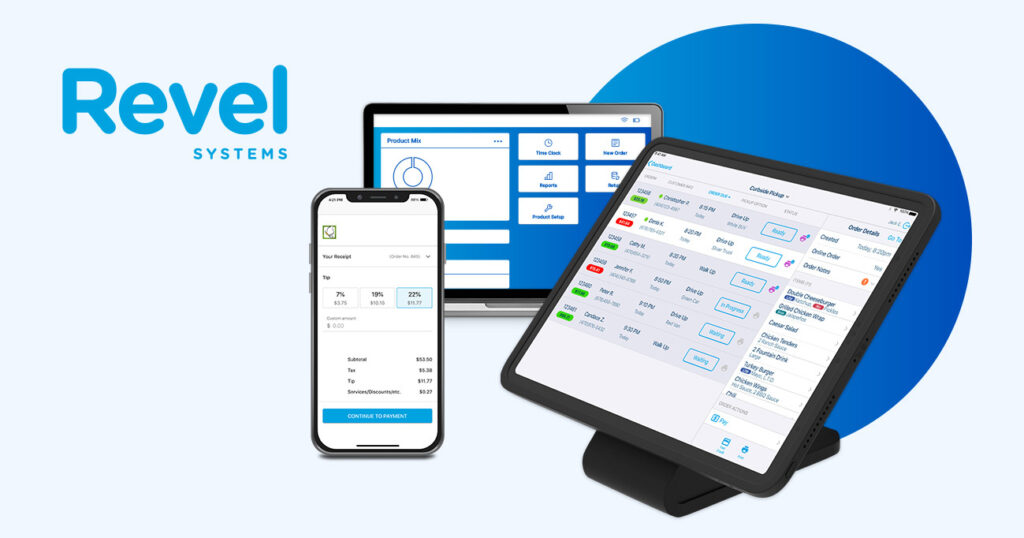
Revel is an industry-leading Point of Sale (POS) and Inventory system designed specifically for multi-unit locations. Revel makes managing inventory a breeze and makes it easy to keep track of remote store stock.
With customizable user permissions, you can delegate inventory tasks throughout the organization while managing stock across multiple stores from one central hub.
Revel’s extensive suite of reporting tools allows you to get a comprehensive overview of all your units’ inventories quickly and accurately.
Choosing the Right Inventory Management System
1. Understand Your Restaurant’s Needs
Like picking clothes for the weather, understand what your restaurant needs. Identify the features and capabilities essential for your inventory management.
2. User-Friendly Interface
Choose a system that’s as easy to use as your favorite app. A user-friendly interface ensures that you and your team can navigate and use the system without a hassle.
3. Scalability
Imagine your restaurant growing like a plant. Choose a system that can grow with you. Scalability ensures that the system can handle an expanding inventory as your business flourishes.
4. Real-Time Updates
Picture having a live scoreboard during a game. Choose a system that provides real-time updates on your inventory. This helps you make decisions quickly and accurately.
5. Integration with Suppliers
Think of it as having a direct line to your ingredient suppliers. An inventory system that integrates with suppliers can help streamline the ordering process, making it faster and more efficient.
6. Cost-Effectiveness
Consider it like getting the best deal at a sale. Choose a system that offers good value for its cost. Look for features that match your needs without breaking the bank.
7. Customer Support
Imagine having a helpful friend on speed dial. Choose a system with good customer support. It ensures that if you ever face issues, there’s someone ready to assist you.
8. Trial Period
Before committing, it’s like trying on shoes. Opt for a system that offers a trial period (at jalebi, we offer a 90 days long trial period!). It allows you to test if it fits your restaurant’s style and needs before making a long-term commitment.
Key parts of inventory management
1. Stock Taking: Regularly monitoring the quantity of products in storage to understand what is available and what needs to be replenished.
2. Ordering and Reordering: Determining when and how much to reorder to prevent stockouts or overstock situations. This involves considering lead times, demand forecasts, and economic order quantities.
3. Categorization: Classifying inventory items based on their type, turnover rate and area of storage.
4. Technology Utilization: Employing tools like inventory management software to automate and streamline tracking processes, reducing the likelihood of errors and improving accuracy.
5. Risk Management: Identifying and addressing potential risks such as stockouts, overstocking, and obsolescence to minimize disruptions and financial losses.
Components of Inventory in a Food and Beverage Business
When we talk about inventory in a food and beverage service, we’re basically talking about all the stuff a restaurant has.
It’s like the restaurant’s treasure chest filled with everything they need to make delicious meals and serve thirsty customers. Let’s open this treasure chest and see what’s inside:
1. Ingredients
These are the stars of the show – the raw materials that go into making your favorite dishes. Think veggies, meats, and all the tasty bits that make your meal special.
2. Small-wares
Every kitchen needs tools to work its magic. From pots and pans to spatulas and plates, these are the behind-the-scenes heroes that help chefs create amazing dishes.
3. Packaging and guest supplies
Imagine getting your favorite takeout without a napkin box or a bag. Inventory also includes all the containers and packaging that keep your food safe and sound until it reaches your plate.
4. Cleaning Supplies
After the cooking and serving fun, there’s always some cleaning up to do. Inventory covers the soaps, towels, and other cleaning goodies to keep the place spick and span.
How Do Restaurants Take Inventory?
Pen and Paper (Manual Counting)
Imagine making a shopping list, but for everything in the restaurant. With pen and paper, staff go around, write down what’s there, and voilà – you have your inventory.
It’s like playing a game of “I Spy.” Staff visually go through the shelves and count each item. One, two, three – keeping track of what’s there by physically counting.
Barcode Scanning
Ever noticed those black and white lines on products? Restaurants use a scanner to read these codes. It’s like magic – beep, and the item is added to the inventory list.
Integrated POS (Point of Sale) Systems
The cash register isn’t just for money. Modern restaurants have systems that automatically update inventory when they ring up a sale. It’s like having a super-smart helper that does the counting for you.
Digital Spreadsheets
Imagine a digital version of that trusty pen and paper. Staff use computers or tablets to create a list, adding and subtracting items as they go. It’s like a high-tech shopping list!
Weight Scales
For items sold by weight, like meats or veggies, there are special scales. Staff weigh these items, and the scale automatically updates the inventory. It’s like having a scale that’s also a super-smart inventory assistant.
RFID Technology
This one is like magic stickers. Each item gets a special sticker, and when staff walk around with a reader, it automatically notes what’s there. It’s like having a secret code for each item.
Choosing the right technique depends on the restaurant’s style and preferences. Whether it’s the old-school charm of pen and paper or the futuristic efficiency of barcode scanning, these techniques make sure a restaurant’s inventory is always in check!
Inventory management for restaurants: 10 Best Practices
Efficient inventory management is the backbone of a successful restaurant operation. Striking the right balance between having enough stock to meet customer demand and minimizing waste is a delicate art.
Here are 10 best practices to help restaurants master their inventory management:
1. Regular Audits and Tracking
Conduct routine audits to track the quantity and condition of all items in stock. Utilize technology such as inventory management software to maintain accurate, real-time data.
2. Categorize Items
Classify inventory items based on their popularity, shelf life, and importance. This helps prioritize restocking efforts and ensures that critical items are always available.
| Category | Description |
| Staples | Essential ingredients that form the base of many dishes. Examples include flour, sugar, salt, and cooking oil. |
| Perishables | Items with a limited shelf life, such as fresh produce, dairy, and meats. Rotation and quick use are crucial to minimize waste. |
| Proteins | Main protein sources for dishes, including poultry, beef, fish, and vegetarian alternatives. Manage quantities based on popularity and shelf life. |
| Beverages | Alcoholic and non-alcoholic drinks, including sodas, juices, wines, and spirits. Monitor demand patterns for efficient restocking. |
| Frozen Goods | Items with a longer shelf life, such as frozen vegetables, desserts, and pre-prepared meals. Manage freezer space and rotation. |
| Non-Perishables | Goods with a long shelf life, like canned goods, pasta, and dry spices. Maintain optimal par levels to meet demand. |
| Condiments and Sauces | Flavor enhancers that contribute to the overall dining experience. Monitor usage and ensure a variety of options are available. |
| Specialty Items | Unique or seasonal ingredients that contribute to specific dishes or limited-time offerings. Manage quantities based on demand forecasts. |
| Cleaning Supplies | Products for maintaining cleanliness in the kitchen and dining areas. Monitor usage and reorder as needed to ensure hygiene standards. |
| Kitchen Tools and Utensils | Essential equipment for food preparation. Keep an inventory to replace or upgrade tools when necessary. |
3. Forecast Demand:
Analyze historical sales data to predict future demand accurately. This enables proactive ordering and reduces the likelihood of stockouts or overstock situations.
4. Supplier Relationships:
Cultivate strong relationships with suppliers. Negotiate favorable terms, discounts, and delivery schedules. Reliable suppliers contribute to consistent product quality and timely restocking.
5. First-In, First-Out (FIFO)
Implement the FIFO method to rotate stock and minimize waste. This ensures that older inventory is used first, reducing the risk of items reaching their expiration dates.
6. Optimize Par Levels
Determine and maintain optimal par levels for each item. Par levels represent the minimum quantity of an item that should be in stock to meet demand until the next order arrives.
7. Employee Training
Train staff on the importance of accurate inventory tracking and the impact on overall operations. Encourage a culture of responsibility regarding handling and reporting inventory levels.
8. Utilize Technology
Leverage technology, such as point-of-sale systems and barcode scanners, to streamline the tracking process. Integrated systems can automate inventory management tasks and reduce human error.
9. Centralized Storage
Organize inventory in a centralized and logical manner. This facilitates easy access, reduces the chances of stockouts, and improves overall kitchen efficiency.
10. Regular Review of Suppliers
Periodically evaluate supplier performance. Assess factors such as reliability, delivery times, and product quality. Consider alternative suppliers to ensure competitiveness and flexibility.
Important Restaurant Inventory Terminology
Sitting Inventory
Imagine a shelf where ingredients patiently wait to be used. Sitting inventory is the amount of stuff that’s just sitting there, ready for its turn in the kitchen. It’s like the quiet backstage of a restaurant.
Depletion
Depletion is like watching your ice cream melt – it’s the reduction or decrease in the quantity of a product. In restaurants, it’s the decrease in the stock of ingredients or supplies as they get used up or sold.
Usage
Usage is how much of something you use. It’s like measuring how many slices of pizza you eat. In a restaurant, usage is the amount of ingredients or supplies consumed during a specific period – a key factor in managing inventory.
Variance
Variance is the difference between what you expected and what actually happened. Picture planning a picnic with sunshine in mind, but it rains – that difference is the variance. In restaurant inventory, it’s the gap between predicted and actual stock levels or costs.
Reorder Point
Think of it like a reminder on your phone to buy more milk. The reorder point is the minimum quantity of an item you should have before placing a new order. It’s like saying, “Hey, it’s time to get more so we don’t run out.”
Lead Time
Lead time is the waiting game. Imagine ordering a pizza and the time it takes from placing the order to the pizza arriving at your door – that waiting time is the lead time. In restaurants, it’s the time between placing an order for supplies and receiving them. Knowing lead time helps plan and avoid running out of essential ingredients.
Physical Stock Count
Physical stock count, also known as physical inventory or stocktaking, is a process in which a company physically counts and verifies the actual quantity of goods or materials it has on hand in its inventory. This process is crucial for maintaining accurate and up-to-date records of the stock levels within a business.
Restaurant inventory KPI’s
Key Performance Indicators (KPIs) for restaurant inventory management provide insights into the efficiency and effectiveness of the supply chain.
Here are some crucial KPIs along with examples of how to calculate them:
Inventory Turnover Ratio
– Formula: Cost of Goods Sold (COGS) / Average Inventory
– Example: If the COGS for a month is $30,000 and the average inventory value is $10,000, the inventory turnover ratio is 3. This indicates that the restaurant’s inventory is being sold and restocked three times within that period.
Stockout Rate
– Formula: (Number of Stockouts / Total Number of Sales) * 100
– Example: If there were 10 instances of stockouts in a month out of a total of 500 sales, the stockout rate is 2%. This reflects the percentage of sales where items were unavailable.
Carrying Cost of Inventory
– Formula: (Average Inventory Value / Total Inventory Value) * 100
– Example: If the average inventory value is $15,000, and the total inventory value is $50,000, the carrying cost is 30%. This represents the percentage of the total inventory value that is tied up in carrying costs.
Gross Profit Margin
– Formula: (Total Sales – COGS) / Total Sales * 100
– Example: If total sales are $50,000 and COGS is $20,000, the gross profit margin is 60%. This indicates the percentage of revenue retained after accounting for the cost of goods sold.
Dead Stock Ratio
– Formula: (Value of Dead Stock / Total Inventory Value) * 100
– Example: If the value of dead stock (expired or unsellable items) is $2,000, and the total inventory value is $30,000, the dead stock ratio is 6.67%.
Order Accuracy
– Formula: (Number of Correct Orders / Total Number of Orders) * 100
– Example: If there were 90 correct orders out of a total of 100, the order accuracy is 90%. This measures the percentage of orders that were fulfilled accurately.
Supplier Performance
– Formula: (Number of On-Time Deliveries / Total Number of Deliveries) * 100
– Example: If a restaurant receives 18 on-time deliveries out of 20, the supplier performance is 90%. This assesses the reliability of suppliers in meeting delivery schedules.
Lead Time Variability
– Formula: Standard Deviation of Lead Time
– Example: If the lead time for a particular ingredient is typically 3 days with a standard deviation of 0.5 days, the lead time variability is 0.5 days. This measures the consistency of supplier lead times.
Monitoring these KPIs allows restaurant owners and managers to make informed decisions, identify areas for improvement, and ensure that inventory management practices align with business objectives.
Restaurant Inventory Tracking Schedule (Sample Table)
| Item | Category | Quantity on Hand | Reorder Level | Last Inventory Check | Next Check Date | Supplier | Notes |
|---|
| Chicken Breast | Protein | 50 kg | 20 kg | 2024-12-15 | 2024-12-20 | FreshMeat Co. | Order more if < 20 kg |
| Flour | Dry Goods | 25 bags (10 kg each) | 10 bags | 2024-12-10 | 2024-12-17 | GrainWorld | Store in a cool, dry place |
| Olive Oil | Condiments | 15 bottles (1 L) | 5 bottles | 2024-12-14 | 2024-12-21 | GreenFarms | Check expiry dates |
| Tomatoes | Vegetables | 30 kg | 10 kg | 2024-12-16 | 2024-12-19 | FarmFresh | Rotate older stock |
| Mozzarella Cheese | Dairy | 40 kg | 15 kg | 2024-12-13 | 2024-12-18 | DairyDelight | Store at 4°C |
| Soda | Beverages | 200 cans | 50 cans | 2024-12-15 | 2024-12-22 | CoolDrinks Co. | Check for damaged cans |
| Coffee Beans | Beverages | 10 kg | 3 kg | 2024-12-12 | 2024-12-19 | BrewMasters | Ensure proper sealing |
| Paper Napkins | Supplies | 2,000 pieces | 500 pieces | 2024-12-14 | 2024-12-20 | PaperEssentials | Bulk discount available |
How is cafe inventory management different?
Café inventory management differs from restaurant inventory management primarily in the types of items tracked and the frequency of restocking. Cafés often deal with a smaller variety of perishable goods but have a significant focus on beverages, such as coffee beans, tea, syrups, and milk, as well as baked goods and pastries.
Unlike restaurants, where the menu is extensive and requires diverse ingredients, cafés often focus on maintaining a consistent supply of a few high-demand items.
For example, coffee beans and milk are staples that must always be in stock to avoid disruptions in service.
Additionally, the shelf life of café items, such as pastries or pre-made sandwiches, is usually shorter, necessitating more frequent inventory checks and tighter control to minimize waste.
Another key difference is in the management of non-food items. Cafés rely heavily on disposables like coffee cups, lids, napkins, and stirrers, which are consumed rapidly and in large quantities.
Tracking these supplies is as critical as managing food and beverage inventory, as running out can directly impact customer service. Moreover, cafés often face peak hours (like morning and evening rushes) that demand precise inventory planning to meet the sudden surge in customer demand.
This contrasts with restaurants, where inventory management revolves around meal preparation and service times.
Overall, café inventory management focuses on streamlining supplies for efficiency, reducing waste, and ensuring the availability of a limited but high-demand product range.

